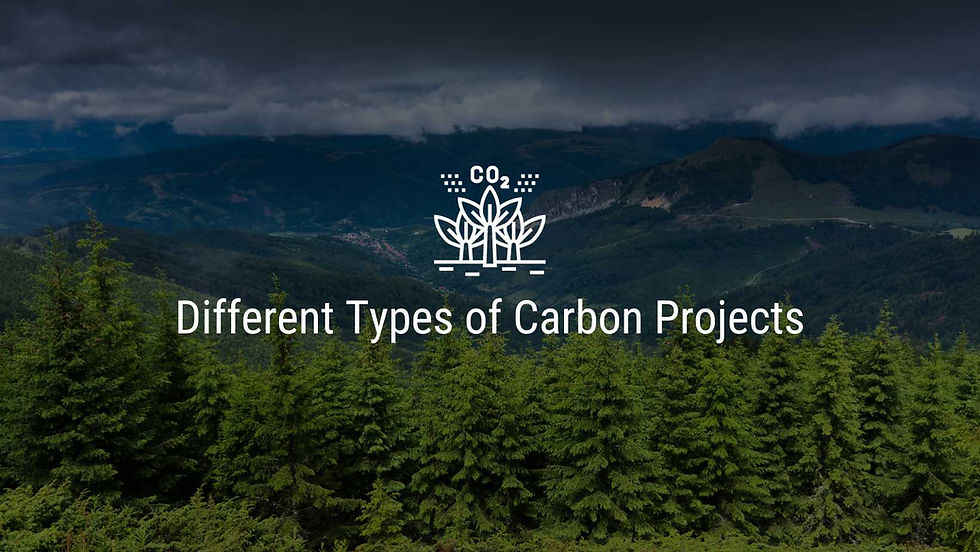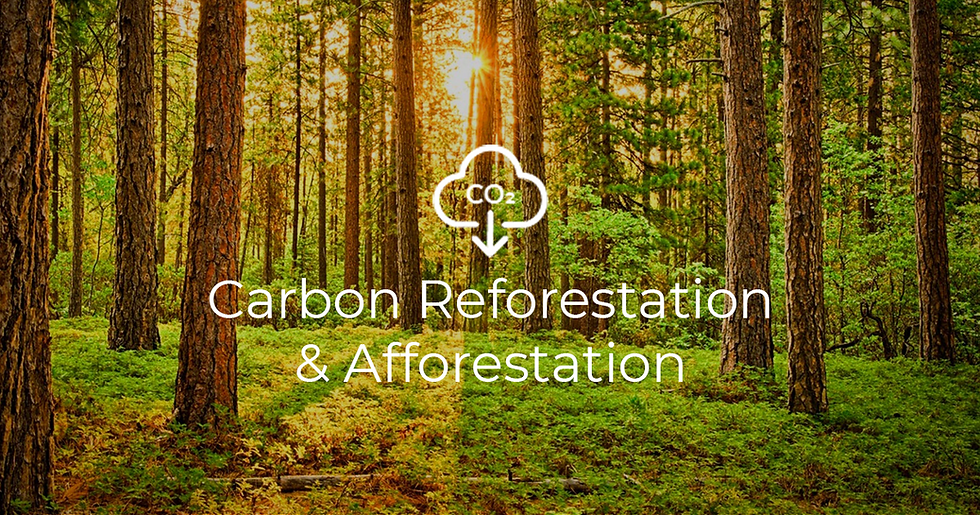Understanding Wetlands: Easements & Carbon Credits
- Craig Kaiser

- Apr 16
- 6 min read

Wetlands are some of the Earth’s most valuable ecosystems, offering a wide range of environmental and economic benefits. However, they are also among the most at-risk areas, often threatened by urban development, agriculture, and climate change. To combat this, wetland easements have emerged as a critical tool for conservation, and their role in generating carbon credits opens up exciting possibilities for both environmental stewardship and financial incentives.
What are Wetlands?
Before diving into the intricacies of easements and carbon credits, it's essential to understand why wetlands matter. Wetlands are ecosystems characterized by the presence of water at or near the surface of the soil for most of the year. They are transitional zones that nestle between terrestrial and aquatic environments, and they vary tremendously in both appearance and ecosystem functions.
In the United States, wetlands can be found in every state, with significant areas such as the Florida Everglades, the Great Dismal Swamp in Virginia and North Carolina, and the extensive wetland regions of Louisiana and the upper Midwest. The biodiversity found in these watery realms is immense. From towering cypress trees and floating lily pads to sphagnum mosses and black spruce in the northern peat bogs, plants have adapted to thrive in the saturated conditions of wetlands.
The Role of Wetlands in the Environment
Wetlands act as nature's sponges, controlling floods and replenishing groundwater. They are the kidneys of the earth, purifying water and storing carbon. From a biological perspective, they are bustling communities of diverse flora and fauna, many of which are endemic to these specific habitats. The complexity and diversity within wetlands are directly linked to the health of surrounding ecosystems.
Animal life is equally varied on wetlands, including bird species like herons, egrets, and woodpeckers, amphibians like frogs and salamanders, as well as a multitude of fish and invertebrates. Mammals, such as the beaver, river otter, and Florida panther, are also crucial to these ecosystems, depending on the dense coverage and rich food supply that wetlands provide.
LandApp helps landowners understand the types of terrain, topography, and soil types present on their property. Property owners, land professionals, and anyone curious about land can receive information on any U.S. property through a free LandApp Property Report:
What are Wetland Easements?
A wetland easement is a legal agreement that permanently restricts certain uses of the land, such as draining, filling, or planting, to preserve its natural state. This type of conservation easement is typically between a landowner and a government agency or a qualified conservation organization, often accompanied by financial and tax incentives.
Benefits of Wetland Easements
Wetland easements serve a dual purpose, offering long-term protection for the environment while providing landowners with a range of benefits. For those committed to land stewardship, an easement can secure the conservation of a cherished area in perpetuity while maintaining property rights related to certain land use practices.
Wetland easements offer a multitude of environmental benefits. They serve as vital wildlife habitats, supporting diverse species and promoting biodiversity conservation. By conserving these valuable wetland areas, landowners play a proactive role in mitigating the impacts of climate change and safeguarding our planet's precious natural resources for future generations.
Participating in a wetland easement program can be financially rewarding for landowners. Through cost-share programs and tax incentives, they can receive payment for conservation practices and help cover the costs of maintaining the wetland area. Easements can also reduce property taxes and estate taxes, making it easier for landowners to pass on their land to future generations. By preserving wetland areas, landowners may also benefit from increased recreational opportunities and ecotourism.
Additionally, carbon accumulation in wetland soils yields several key benefits for soil health. When carbon-rich plant material gradually decays in the anaerobic conditions of wetlands, it forms peat- an accumulation of organic matter that is not fully decomposed. This peat layer is critical for improving the soil structure and increasing its capacity to retain water and nutrients. The high organic matter content enhances the soil's fertility, providing a rich substrate that supports the growth of wetland vegetation. The ability of wetland soils to sequester carbon contributes to climate change mitigation and fortifies the soil against erosion and degradation, preserving its vitality for supporting diverse ecosystems.
Carbon Credits and Wetland Conservation
By preserving these ecosystems, wetland easements also contribute significantly to carbon sequestration. This is where the connection to carbon credits comes into play. Wetlands are often referred to as natural "carbon sinks." They store carbon dioxide (CO2) and other greenhouse gases in their soils and vegetation. Unlike most ecosystems, wetlands can store large amounts of carbon for hundreds, or even thousands, of years due to their unique waterlogged conditions. These conditions slow the decomposition process, allowing organic matter to accumulate in the form of peat and other carbon-rich deposits.
For instance, coastal wetlands like mangroves, salt marshes, and seagrass meadows are particularly effective at capturing "blue carbon," a term used to describe carbon stored in marine ecosystems. Studies show that such habitats can sequester carbon up to 10 times more efficiently than tropical rainforests. Without protection, however, the carbon stored in wetlands is vulnerable to release into the atmosphere, intensifying global climate change.
Understanding Carbon Credits
Carbon credits are tradable permits that allow a holder to emit a certain amount of carbon or other greenhouse gas emissions. They are a key component of national and international governmental and private-sector climate programs, notably carbon offsetting schemes. Carbon offset credits are awarded to projects that reduce or sequester carbon emissions in the atmosphere, such as wetland restoration.
By conserving or restoring wetlands, landowners not only contribute to a healthier planet but also have the opportunity to participate in the growing market for emissions reductions. There are many different types of carbon projects, and selling carbon credits derived from wetland conservation or restoration efforts allows landowners to tap into this market and further incentivizes the preservation of these vital ecosystems.
The Carbon Credit Market in the United States
In the United States, carbon markets have become integral platforms for addressing greenhouse gas emissions. The most well-known markets include compliance markets, such as the California Cap-and-Trade Program, a part of the Western Climate Initiative, and the Regional Greenhouse Gas Initiative (RGGI) in the Northeast and Mid-Atlantic states. In these markets, the government sets a 'cap' on the total amount of greenhouse gases that can be emitted by all participating entities. Companies that lower their emissions can sell their excess allowances to those who need more.
Beyond compliance markets, there are voluntary carbon markets where individuals and companies buy carbon credits to offset their own emissions as part of their sustainability goals. These credits can come from a variety of conservation projects, including wetland restoration, reforestation, and renewable energy. The voluntary market is less regulated than compliance markets, but standards set by organizations like Verra or the Gold Standard help ensure the authenticity and environmental integrity of the credits.
These market mechanisms are designed to promote cost-effective emission reductions and drive investment in clean technology and conservation efforts. Through such economic incentives, the United States is leveraging market forces to accelerate progress toward environmental sustainability and climate change mitigation goals.
How to Get a Wetland Easement
Obtaining a wetland easement involves researching the available options, then partnering with a conservation entity who can help with evaluating your eligibility.
Partnership with Conservation Entities
Securing a wetland easement usually involves working with conservation organizations or government agencies. These entities can provide support throughout the process, including evaluating the property, negotiating terms, and providing financial assistance. They also ensure that the easement agreement is legally binding and enforceable, protecting the land's conservation for future generations.
Eligibility Requirements
To be eligible for a wetland easement, the property must meet specific criteria set by the easement program. These may include having an area classified as a wetland or adjacent to a water body, having suitable soil types and vegetation, and having the potential to be restored or enhanced. Landowners interested in pursuing a wetland easement should research their state's specific eligibility requirements and consult with conservation entities.
Institutional Actors and Available Resources
There is a host of resources and organizations available to landowners interested in pursuing a wetland easement. From state and federal agencies like the Natural Resources Conservation Service (NRCS) to non-profit groups specializing in conservation, land stewards do not have to navigate the process alone. These organizations can provide expertise and guidance, and may also offer financial assistance or cost-share programs.
Easements and the Future of Wetlands
The conservation of wetlands is a critical pursuit for the health of our environment and its inhabitants. Wetland easements, coupled with the burgeoning carbon credit market, offer a means for landowners to play a pivotal role in this conservation effort. By understanding the potential benefits and procedures involved, more individuals and organizations can become champions for wetland preservation, ensuring these precious landscapes endure for future generations.
Conserving our wetlands is more than just a matter of policy or ecological science; it's a commitment to maintaining the rich tapestry of life on Earth. With the right knowledge and support, landowners can be at the forefront of this noble endeavor, reaping rewards that extend beyond mere financial gain. In embracing wetland easements and the carbon credit models that support them, we move closer to a world where nature and humanity coexist in harmony.
Curious about your land's carbon sequestration potential? Get a free LandApp Property Report and check out the Carbon Sequestration Value Index Score, which rates your property's carbon credit potential on a scale of 0 to 100:



